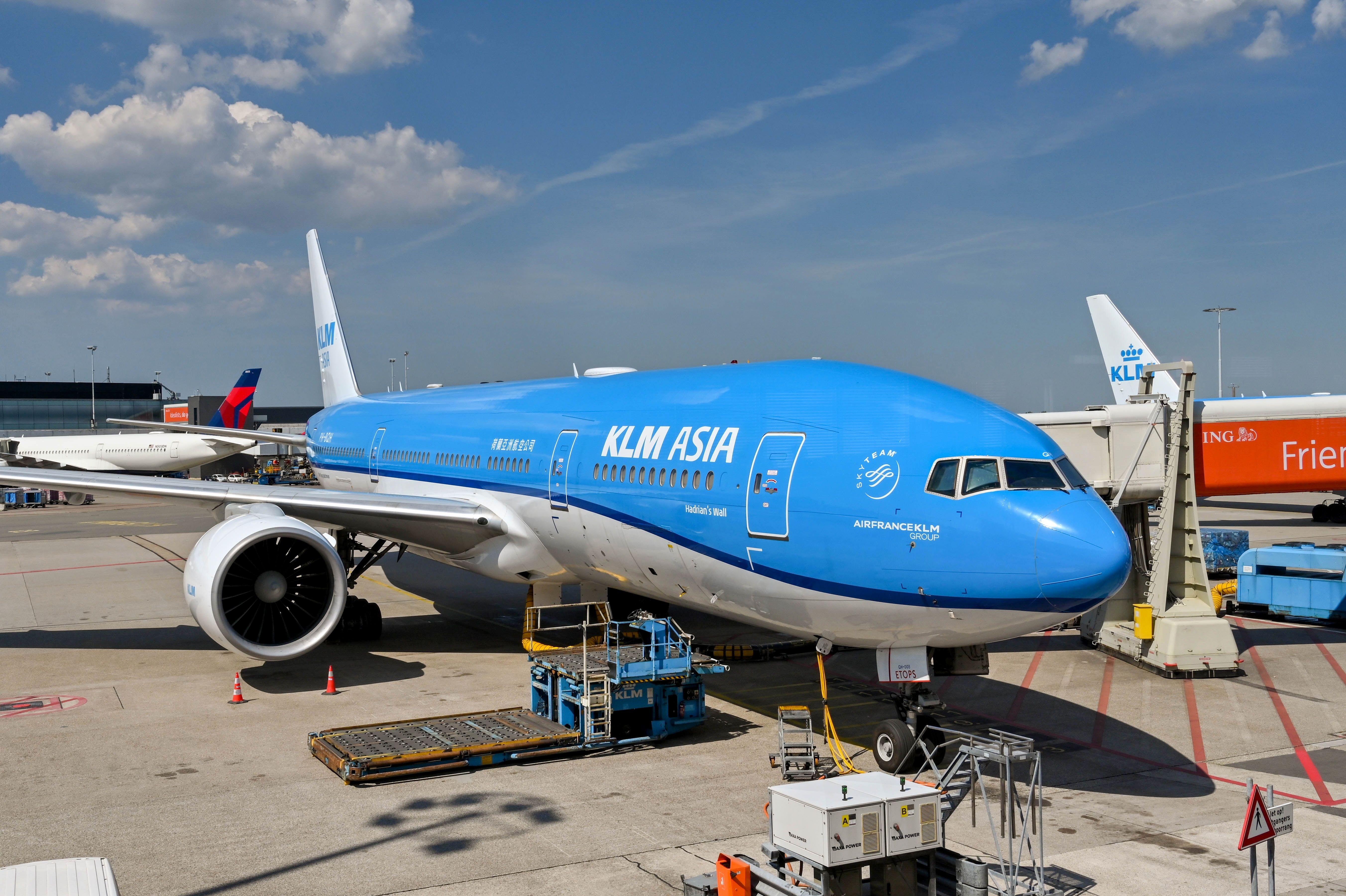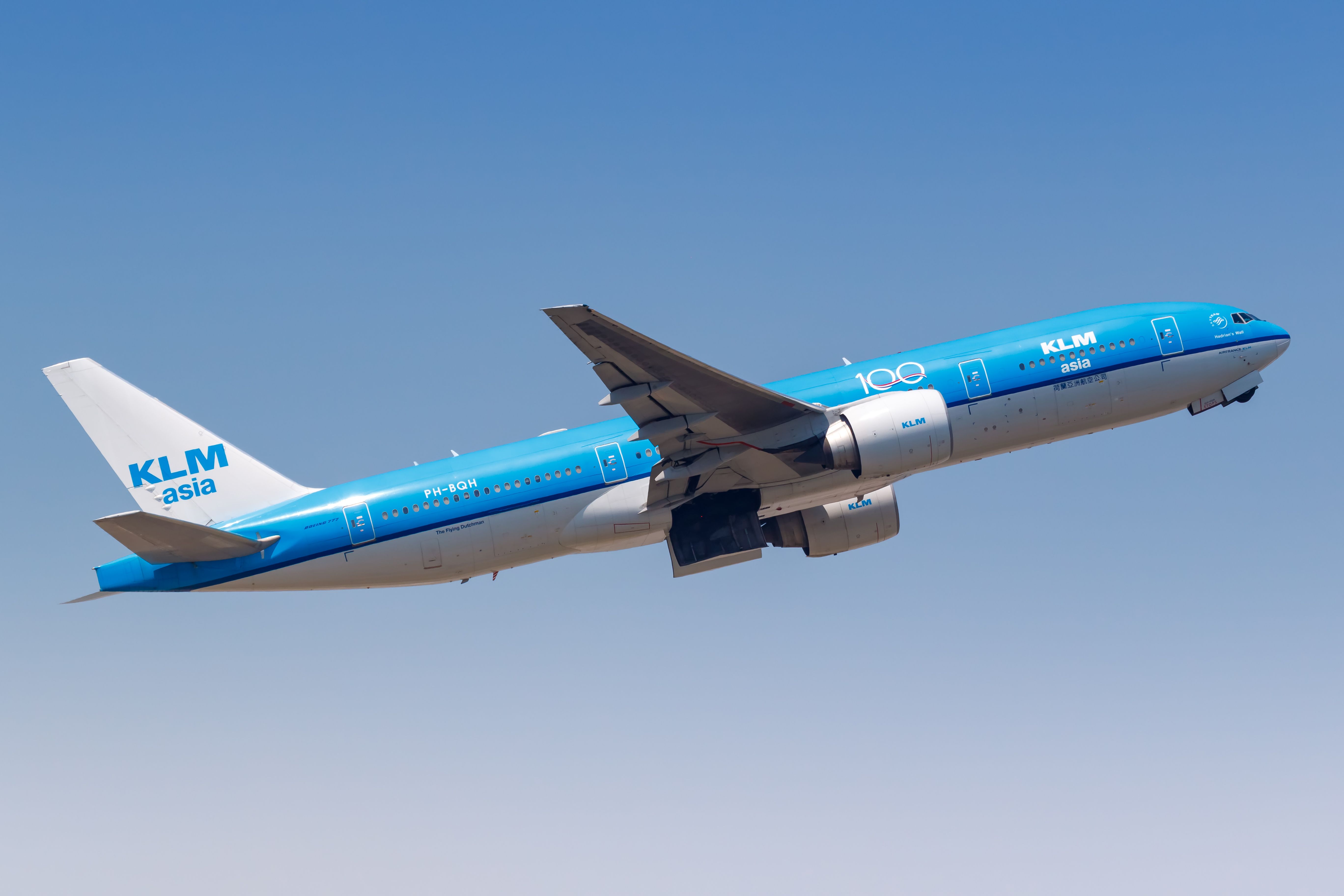Founded in 1995 to allow the Dutch flag carrier to fly to Taiwan, KLM Asia was a subsidiary of Amsterdam-based KLM Royal Dutch Airlines. The removal of the royal crown from its livery, as well as the addition of the word 'Asia' to its name, was done to appease mainland China authorities who still regarded Taiwan as a part of China.
A useful loophole
With a population of 1.4 billion compared to Taiwan's 24 million, China and its economy is a bigger fish than Taiwan. Nonetheless, Taipei Taoyuan International Airport (TPE) is still considered to be a worthwhile long-haul destination among European flag carriers. However, 1990s political tensions once made this difficult.
Indeed, it was during that decade that China announced that any airline flying to Taiwan would not be allowed to fly to mainland China, owing to the challenging political climate between the two. This brought about KLM Asia and the crown-free livery, as the change allowed KLM to keep the Chinese authorities friendly by claiming that it did not fly to Taiwan, and that KLM Asia was a separate entity.
Love aviation history? Discover more of our stories here!
Now legally registered in Taiwan as KLM Asia, the Dutch national flag carrier could fly between Amsterdam Schiphol (AMS) and Taipei Taoyuan International. To make the route even more lucrative, KLM Asia also made TPE a stopover between Amsterdam and Ninoy Aquino International Airport (MNL) in the Philippines. KLM Asia aircraft are sometimes used on other routes, but never to mainland China.
A big fan of Boeing widebodies
Initially, KLM Asia flew from Amsterdam Schiphol to Taipei via Thailand's Bangkok Don Mueang International Airport (DMK) using Boeing 747 aircraft, such as the example pictured below. Data from Planespotters.net shows that a grand total of seven Boeing 747-400M 'Combi' aircraft served KLM Asia between 1995 and 2017.
These aircraft were named after a variety of cities worldwide, namely Calgary, Dubai, Freetown, Hong Kong, Johannesburg, Mexico City, and Paramaribo. With the age of the 747 now all but over, these aircraft, which seated 268 passengers across three classes, have all either been scrapped or placed into storage.
Get the latest aviation news straight to your inbox: Sign up for our newsletters today!
Today, KLM Asia retains an all-Boeing fleet, albeit made up of twin-engine 777s rather than four-engine 747s. The carrier currently has nine of these two-class twinjets at its disposal, with this figure comprising seven 777-200s (320 seats, 18.1 years old on average) and two 777-300ERs (408 seats, 14.7 years old on average).
British Airways also got in on the act
KLM was far from the only carrier to create a 1990s subsidiary airline in order to serve Taiwan alongside its mainline services to China. British Airways devised British Asia Airways for this exact reason in 1993, and flew specially-liveried Boeing 747s from London Heathrow to Taipei via Hong Kong for five years until 1998.
Have you ever flown on KLM Asia? If so, what was your journey like? Let us know your thoughts and experiences in the comments!
Sources: Airways Magazine, Planespotters.net




.jpg)